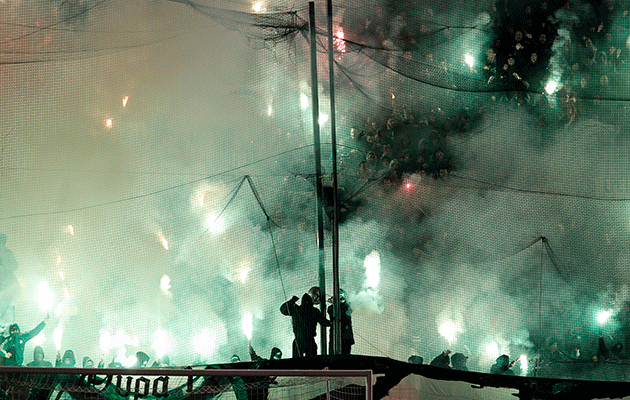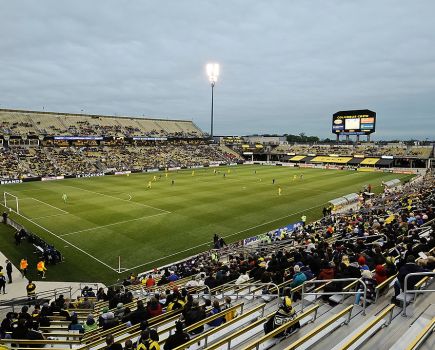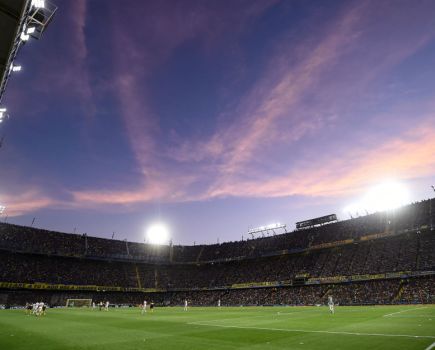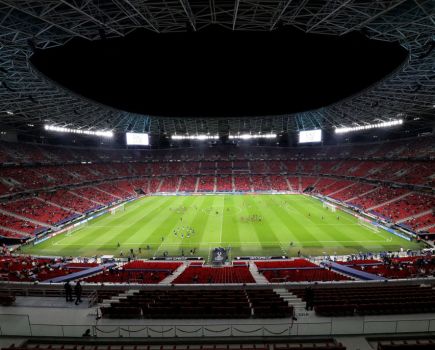Athens is one of 150 soccer cities featured in Libero, the digital travel guide for football fans. Regularly refreshed with new destinations and travelogues, Libero is a one-click treasure trove of football trip tips, tales and trivia. See www.liberoguide.com/athens.
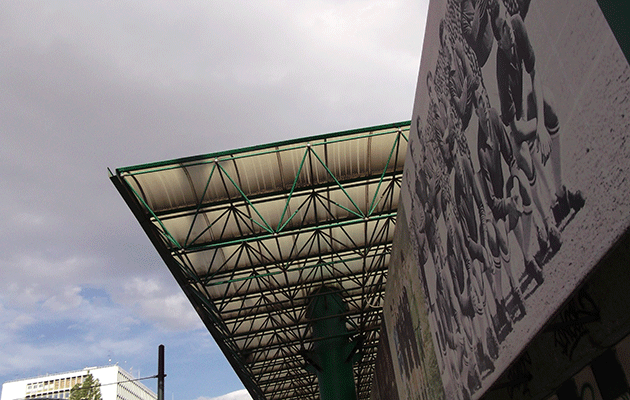
Apostolos Nikolaidis Stadium, Panathinaikos-Olympiacos, Greek Superleague, Sat Nov 21, 7.30pm local time/5.30pm UK
One of the biggest derbies in European football is the clash between Greek giants Panathinaikos and Olympiacos. One is steeped in tradition, the other wealthy, dominant and champions the last five seasons running.
‘The Game of the Eternal Enemies’ has given rise to so much trouble, the fixture has long been played out before home fans only. In 2015, it even stopped the whole Greek league entirely, invasions and missile throwing by the Panathinaikos crowd at the Apostolos Nikolaidis Stadium causing the country’s sports minister to suspend all domestic football the following day. He soon went back on his rash pronouncement – and Olympiakos duly won that fifth league title on the bounce.
It’s more than 20 years since anyone from outside the big two has won the Greek championship.
Olympiacos have a fan base of blue-collar workers from the port of Piraeus while Panathinaikos are typified by the wealthier support of Ambelokipi in the comfortable north-west of Athens. Grainy black-and-white footage of the infamous cup semi-final between the two in 1964 shows Olympiacos fans literally break up the Apostolos Nikolaidis Stadium piece by piece. The game was abandoned during extra-time and the trophy awarded elsewhere. The away fan ban was imposed in 2004 after the equally notorious derby the year before, typified by showers of missiles being launched at the pitch for 90 minutes and beyond.

The aristocrats of Panathinaikos were formed by gentleman sportsman, Rear Admiral Giorgos Kalafatis in 1908. Winning the league at least once every decade, ‘PAO’ are the only Greek club to have made a major European final, in 1971.
A mini-revival in the 1990s saw PAO reach the last four of the Champions League, but they have since failed to break the long-term dominance of Olympiacos at home. For Panathinaikos, home is Ambelokipi in comfortable north-west of Athens – more specifically, modest Apostolos Nikolaidis stadium, along the main road Leof Alexandras, close to where Rear Admiral Kalafatis was born.
Panathinaikos enjoyed their first golden era in the 1960s. Under Stjepan Bobek, stars Mimis Domazos and Takis Loukanidis helped PAO win five titles in six years. Domazos, who made more than 500 appearances over 20 years, also played in the side spearheaded by prolific centre-forward Anton Antoniadis that won another three titles and lost to Ajax in the European Cup Final of 1971. That Wembley appearance was the finest achievement of Ferenc Puskás as a coach.

By the time they had moved into the newly built Olympic Stadium, PAO were picking up titles on a regular basis, helped by the riches of shipowning president Giorgios Vardinogiannis. PAO made two European Cup/Champions League semi-finals in just over a decade, the second thanks to the goals of Polish striker Krzysztof Warzycha.
By the time oil tycoon Yiannis Vardinogiannis, nephew of Giorgios took over in 2000, PAO were firmly second banana to Olympiacos.
Behind the scenes, a supporters’ group was trying to wrest control of the club from the Vardinogiannis clan, succeeding in the summer 2012 when the Panathinaikos Alliance gained over 50% of the shares with money raised from an internet campaign.
After a shaky start, these fans were able to celebrate winning the Greek Cup in 2014, a 4-1 win over PAOK at the Olympic Stadium, and runners-up spot in the league. Cup hat-trick hero, The Shamrocks hadn’t the strength in depth to stake a place in the subsequent group stage of the Champions League – but this is a club owned and run by its fans, in a Greek game ruled by the bulging wallets of shipping magnates.
On the ground
Site of the club shop, ticket office and fans’ bar, the Apostolos Nikolaidis has come back into use as the club’s home stadium, and PAO have vacated the Olympic Stadium. Plans for a new arena, however, have been put on ice.
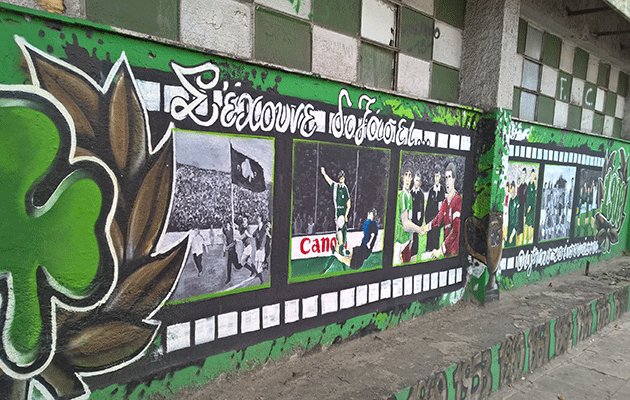
After vacating the Olympic Stadium in 2013, PAO settled back in their spiritual home of the Apostolos Nikolaidis beside Ambelokipi metro station (blue line, three stops from central Syntagma). Its exterior decked in huge images from PAO’s history (note the wonderful shot of Puskás in front of his team), this traditional old ground, the first in Greece to have a stand, floodlights and an all-grass pitch, was the de facto national stadium until the arrival of the Olympiako.
Too tightly squeezed for expansion, the venerable homestead then proved too limited even for PAO, who joined the Greek national side up in Maroussi. After a €7 million upgrade in 2001, various attempts to rehouse PAO back in Ampelokipi proved fruitless, until the club had a change of ownership. After a €2 million renovation in 2013, the stadium was deemed worthy of a staging top-flight matches, its capacity 16,000.

Walk round Odos Panathinakos to Tsocha to find the PAO club shop at gate 8/9. Among the treasures here are a PAO armchair, a PAO birthday cake, a lovely volume published for the club centenary and, in the window, an unmissable PAO v AEK Subbuteo set. The shop also sells PAO match tickets.

Back on Odos Panathinakos, the Mad Boys 13 Bar owes its title to the gate where the PAO faithful again gather opposite. If it’s all a bit too fanatical, there’s a bar a few doors down offering rock music and Amstel beer.

